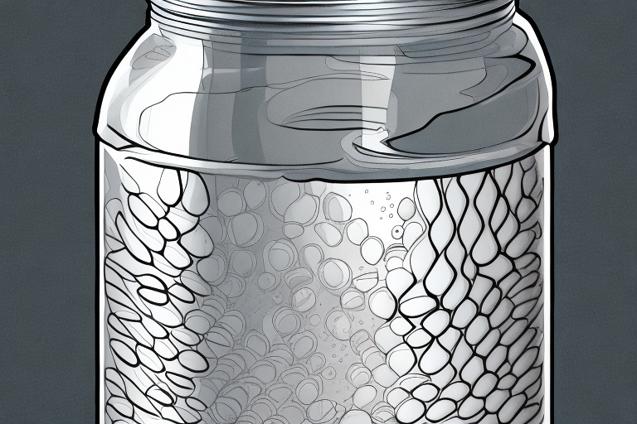
Stay healthy and safe while sailing the open seas with your family by understanding the connection between dehydration and medical emergencies on a boat.
The Connection Between Dehydration and Medical Emergencies on a Boat
Sailing the open seas with your family is an incredible adventure, filled with excitement, freedom, and the opportunity to create lasting memories. However, it’s essential to be prepared for the challenges that come with this lifestyle, including maintaining your health and well-being while at sea. One of the most common and potentially dangerous health issues that sailors face is dehydration. In this article, we’ll explore the connection between dehydration and medical emergencies on a boat, and provide practical advice on how to prevent and treat this condition.
Understanding Dehydration
Dehydration occurs when your body loses more fluids than it takes in, leading to an imbalance in your body’s electrolytes. Electrolytes are essential minerals, such as sodium, potassium, and magnesium, that help regulate various bodily functions, including muscle contractions, nerve function, and maintaining a proper pH balance.
When you’re dehydrated, your body struggles to perform these essential functions, which can lead to a range of symptoms and complications. Some of the most common signs of dehydration include:
- Thirst
- Dry mouth and throat
- Dark yellow urine
- Fatigue
- Dizziness or lightheadedness
- Headaches
- Muscle cramps
In more severe cases, dehydration can lead to more serious symptoms, such as:
- Rapid heartbeat
- Rapid breathing
- Sunken eyes
- Cold, clammy skin
- Confusion or irritability
- Fainting
If left untreated, severe dehydration can lead to life-threatening complications, such as heatstroke, kidney failure, and even death.
The Connection Between Dehydration and Medical Emergencies on a Boat
There are several factors that make dehydration a particularly significant concern for sailors:
1. Increased Exposure to Sun and Heat
When you’re out on the open water, you’re often exposed to direct sunlight for extended periods. This can lead to increased sweating, which is one of the primary ways your body loses fluids. Additionally, the heat generated by the sun can cause your body to lose even more fluids through increased respiration.
2. Limited Access to Fresh Water
While sailing, you may not always have easy access to fresh, clean drinking water. This can make it challenging to stay properly hydrated, especially if you’re not prepared with an adequate supply of water on board.
3. Physical Exertion
Sailing can be physically demanding, particularly when you’re handling sails, navigating rough waters, or performing other tasks that require strength and endurance. This physical exertion can lead to increased sweating and fluid loss, further increasing your risk of dehydration.
4. Sea Sickness
Seasickness is a common issue for sailors, particularly those who are new to the lifestyle or prone to motion sickness. Vomiting and diarrhea, which are common symptoms of seasickness, can lead to significant fluid loss and increase your risk of dehydration.
Preventing Dehydration While Sailing
To minimize your risk of dehydration and the associated medical emergencies, follow these practical tips:
1. Drink Plenty of Water
The most effective way to prevent dehydration is to drink plenty of water throughout the day. Aim for at least 8-10 cups of water per day, and increase this amount if you’re engaging in physical activity or exposed to high temperatures.
2. Monitor Your Urine Color
A simple way to gauge your hydration levels is to monitor the color of your urine. If your urine is pale yellow, you’re likely well-hydrated. However, if your urine is dark yellow or amber, this may be a sign that you need to drink more water.
3. Limit Alcohol and Caffeine Consumption
Alcohol and caffeine can both act as diuretics, causing your body to lose fluids more quickly. Limit your consumption of these beverages, particularly when you’re exposed to heat or engaging in physical activity.
4. Eat Hydrating Foods
In addition to drinking water, you can also stay hydrated by consuming foods with high water content. Fruits and vegetables, such as watermelon, cucumber, and oranges, are excellent sources of hydration.
5. Take Breaks in the Shade
When possible, take breaks in the shade to minimize your exposure to direct sunlight and reduce your risk of dehydration.
Treating Dehydration on a Boat
If you or a family member begins to show signs of dehydration, it’s essential to take action immediately. Follow these steps to treat dehydration:
1. Drink Water
Encourage the affected person to drink water slowly and steadily. If they’re experiencing severe symptoms, such as rapid heartbeat or confusion, it may be necessary to administer small sips of water every few minutes.
2. Replenish Electrolytes
In addition to water, it’s essential to replenish the lost electrolytes. Sports drinks, coconut water, or oral rehydration solutions can help restore the balance of electrolytes in the body.
3. Rest and Cool Down
Encourage the affected person to rest in a cool, shaded area. If possible, use fans or damp cloths to help lower their body temperature.
4. Seek Medical Attention if Necessary
If the affected person’s symptoms do not improve or worsen after following these steps, it’s essential to seek medical attention as soon as possible.
In conclusion, dehydration is a significant concern for sailors, as it can lead to a range of medical emergencies. By understanding the connection between dehydration and these emergencies, and following the practical advice provided in this article, you can help ensure that you and your family stay healthy and safe while enjoying your sailing adventures.